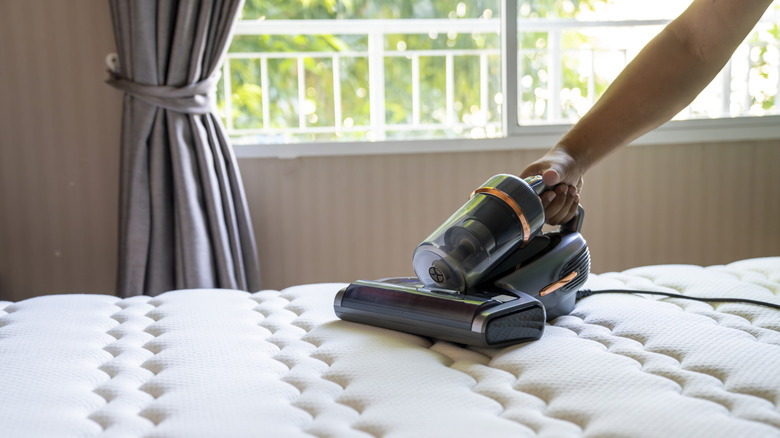The Importance of Regular Mattress Cleaning
Spring cleaning your home each year is a task that many people find daunting, but it’s often worth the effort once it’s completed. While some may not think about cleaning their mattress during spring, it should be on the list of priorities. A typical mattress can harbor up to 10 million dust mites, which are microscopic pests that feed on dead human skin cells. To make things even more unsettling, the average person produces approximately 26 gallons of sweat at night each year, some of which seeps into the mattress.
If this information has left you feeling disgusted, you might be considering that cleaning your mattress just once a year isn’t enough. And you’d be right. While there’s no universal agreement on how often you should clean your mattress, experts suggest that vacuuming and airing it out at least every six months is a good starting point. On the other end of the spectrum, some microbiologists recommend vacuuming weekly and allowing the mattress to air out every few days.
Personal preference plays a significant role in determining the frequency of mattress cleaning. If you have pets that share your bed, you may want to vacuum once a week to manage pet hair. Individuals with allergies might benefit from cleaning their mattress monthly or even more frequently. One effective way to reduce the need for frequent deep cleaning is by using a high-quality mattress protector. Understanding the steps involved in a thorough mattress cleaning and knowing how to tackle stubborn stains can help maintain a cleaner sleeping environment.
Steps for a Deep Clean of Your Mattress
Once you’ve chosen the best mattress for your needs, ensuring it lasts a long time is essential. A clean mattress typically offers greater longevity than one that is rarely cleaned. Before beginning the cleaning process, it’s important to review the manufacturer’s instructions for any specific guidelines you should follow during a deep clean. This is also an excellent opportunity to wash all your bedding while you’re at it.
Start by vacuuming the surface and sides of the mattress. If your vacuum comes with an upholstery attachment, use it to ensure you remove as much dust and debris as possible. Lightly sprinkle a layer of upholstery deodorizer across the surface; baking soda works well for this purpose. Leave the deodorizer on the mattress for several hours, if possible, before vacuuming it again. Some people also recommend using a garment steamer to kill any remaining dust mites. Allow the mattress to dry completely before vacuuming once more.
If your mattress is designed to be flipped, do so now and repeat the cleaning steps on the other side. For single-sided mattresses, lift the mattress and vacuum the underside. Let the mattress air out by opening all the windows to create a cross breeze, allowing the materials to breathe for a few hours. Once it’s dry, place your mattress protector and clean fitted sheets back on.
Removing Different Types of Stains
If your mattress has stains after vacuuming, there are several methods you can use to address them, depending on the type of stain. One common issue is removing sweat stains, which often appear yellowish and have a musty odor. To tackle these, mix 1/4 cup of hydrogen peroxide, 1 tablespoon of liquid dish soap, and 1 tablespoon of salt. Apply the paste to the stain using an unused toothbrush, let it dry, and then scrape it away.
Blood stains are another possibility. Fresh blood stains tend to be bright red and easier to clean, while older stains may appear brown. If the stain is fresh, use a rag soaked in cold water to dab the area. Change the rag as needed and avoid rubbing, as this can spread the stain further. If the stain is stubborn, dampen it with cold water and mix 1/2 cup of hydrogen peroxide, 1/2 cup of cornstarch, and 1 tablespoon of salt. Apply the paste immediately and let it sit until the bubbling stops. Then pat the area with a clean cloth to absorb the mixture and allow it to dry.
By following these steps, you can keep your mattress clean and extend its lifespan, creating a healthier and more comfortable sleeping environment.







